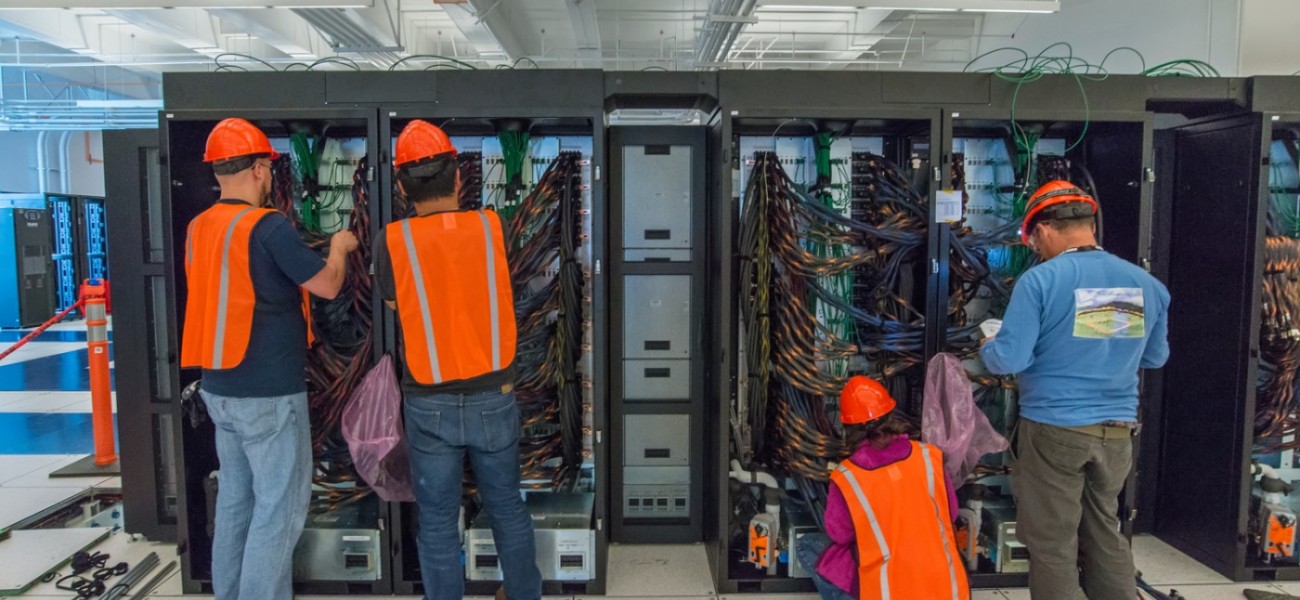
The value and impact of the scientific research conducted at the National Energy Research Scientific Computing Center (NERSC) are among the best of global supercomputer sites, according to a new report by Hyperion Research.
The report, “Measuring and Assessing the Value and Scientific ROI of NERSC’s Leadership Computing in Advancing Science,” is based on Hyperion’s established framework for measuring the importance and impact of research conducted using HPC facilities. This framework was developed with the support of the U.S. Department of Energy (DOE) to help provide insight into HPC investments by examining individual projects and comparing the amounts spent on HPC resources with the projects’ financial and innovation returns. NERSC commissioned the study to coincide with its 50th anniversary. In its study, Hyperion conducted 42 interviews with some of NERSC’s top users.
In summary, the report states, “The study consistently demonstrated that NERSC research provided the highest levels of importance and impact [...]. Beyond the impact and value of the research conducted at NERSC, study participants also considered its operational characteristics to be the standard by which all other scientific computing facilities should aspire.”
The report’s key findings include the following:
- The value and impact of research performed at NERSC are among the best global HPC facilities.
- NERSC research represented a broad range of scientific discovery areas.
- Advancing science is the clear mission of researchers using NERSC.
- NERSC's accomplishments go beyond scientific discovery.
- Scientists and researchers resoundingly praised NERSC.
These findings reflect some of NERSC’s primary organizational qualities and goals:
- NERSC supports large-scale computing on innovative systems.
- NERSC fosters an environment for collaboration. Researchers work closely with colleagues at other academic and government research institutions in the U.S. and globally.
- The most commonly recognized outcomes were increasing the productivity, efficiency, and success of scientists and researchers, and building a more diverse and stronger scientific workforce.
NERSC’s technical achievements weren’t the only strengths noted in the report; those interviewed also mentioned the exceptional user experience, from applying for allocations to user support. Researchers who were interviewed cited NERSC’s
- Continued priority and excellence in computational capabilities;
- Quality, reliability, and uptime of the site’s resources;
- Straightforward process by which users obtain time on its machines; and
- Superior support whenever questions or issues arise.
Compared with the 650 other projects studied by Hyperion, projects hosted at NERSC stood out as being “intentionally built with the goal of sharing innovations with larger scientific communities,” thus growing the scientific community’s understanding of basic research discoveries. The study also found that NERSC projects are both noteworthy within their fields and broadly applicable, and that “a considerable portion of the research assessed in this study shows a high potential for substantial societal impact.”

“What makes NERSC different from other global HPC centers is that it’s not run just as a research facility, it’s also the easiest to use. ...It’s HPC being run with the researchers in mind.”
The report included statements from scientists interviewed for the study. The comments reflected many of the main findings.
“We appreciate what a super-efficient organization NERSC is for supporting world-class research,” said Manos Mavrikakis, Paul A. Elfers Professor and the Vilas Distinguished Achievement Professor of Chemical Engineering at the University of Wisconsin–Madison. “It’s amazing to see how such a complex enterprise can facilitate world-class research. It’s a real jewel for the computational sciences and engineering community.” Mavrikakis has used NERSC for more than 25 years and acknowledged NERSC in more than 250 scientific publications.
Paolo Calafiura, a physicist and senior research scientist at Berkeley Lab, said, “What makes NERSC different from other global HPC centers is that it’s not run just as a research facility, it’s also the easiest to use. Documentation is excellent, and support is good. It’s HPC being run with the researchers in mind.”
About NERSC and Berkeley Lab
The National Energy Research Scientific Computing Center (NERSC) is the mission computing facility for the U.S. Department of Energy Office of Science, the nation’s single largest supporter of basic research in the physical sciences.
Located at Lawrence Berkeley National Laboratory (Berkeley Lab), NERSC serves 11,000 scientists at national laboratories and universities researching a wide range of problems in climate, fusion energy, materials sciences, physics, chemistry, computational biology, and other disciplines. An average of 2,000 peer-reviewed science results a year rely on NERSC resources and expertise, which has also supported the work of seven Nobel Prize-winning scientists and teams.
NERSC is a U.S. Department of Energy Office of Science User Facility.
Media contact: Email our communications team ⟶